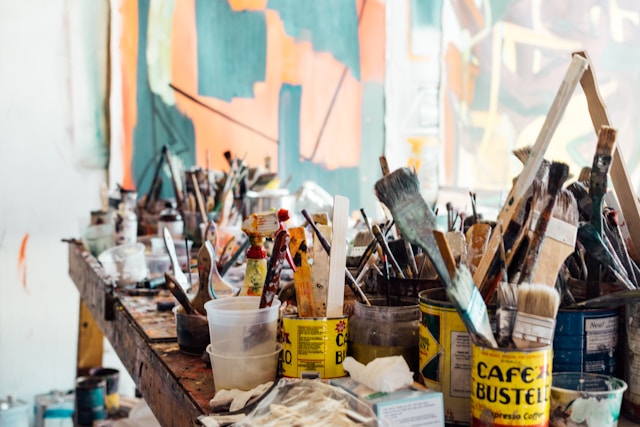Art has always been a mirror of human history. In the past, cave paintings showed us what people thought was important, and in the Renaissance, art showed the growing interest in science and humanity. Today, art is more than just beautiful to look at. It tells stories about us, our society, and the times we live in. Through art, we can see how the world has changed and continues to change. It invites us to reflect on its place in our lives today.
The Roots of Modern Art
The 20th century brought great changes in art, marked by movements that still have an impact today. Expressionism emerged at the beginning of the century and gave rise to artists such as Edvard Munch and Ernst Ludwig Kirchner, who expressed their feelings through distorted shapes and bright colors. This movement showed how art can put inner experiences above external reality.
Slightly later came Surrealism, which combined the everyday with the dreamlike. Artists such as Salvador Dalí and René Magritte painted pictures that looked almost like dreams and made people think differently about reality. Important art movements of the 20th century:
- Expressionism: emphasis on emotional representation.
- Surrealism: exploration of dream worlds and the unconscious.
These movements have had a lasting impact on art and paved the way for the diverse art forms we see today. They taught us to think beyond the boundaries of traditional perception and to see the world from new perspectives.
Digital Revolution and its Impact on Art
The art world has changed dramatically due to the digital revolution. Today, artists use computers and digital tools to create art in entirely new ways. These technologies make it possible to quickly experiment with colors and shapes and to more easily share artworks with people all over the world.
The use of software and digital platforms also creates entirely new forms of art, such as digital installations or virtual reality art, that were previously not possible. This makes art more accessible and can be experienced by a global audience. Here are some artists who incorporate technology into their work:
- Refik Anadol: He uses artificial intelligence to create fascinating visual installations that can often be seen on large screens in public spaces.
- Laurie Anderson: She combines music, video and performance, making technology an essential part of her art.
- TeamLab: This group creates interactive art that directly involves the audience, breaking down the boundaries between the artwork and the viewers.
These developments have not only changed the way art is made, but also how we perceive and experience it.
Interdisciplinary Art and Cultural Exchange
Today, artists are mixing everything from painting and sculpture to dance and digital media, creating art that is hard to pigeonhole. This type of art shows how creative it can be to cross borders and combine different art forms. Thanks to globalization and the Internet, artists can more easily come into contact with and be inspired by different cultures. Their artwork is often a colorful potpourri of worldwide influences and shows how diverse our world is.
Such artwork is not only beautiful to look at, but also important because it brings people from different corners of the world closer together. It helps us to understand each other better and shows how complex and fascinating human culture is.
Art as a Means of Social and Political Expression
Art is not only beautiful to look at, but it can also convey a powerful message and create real change. Artists often use their work to address important social and political issues and to spark discussion around those topics. Here are some examples of art that has something to say:
- Banksy: The well-known street artist who uses his provocative images to critically examine issues such as surveillance, consumerism and the refugee crisis.
- Ai Weiwei: This Chinese artist often deals with human rights and his criticism of the government in his work.
- JR: An artist who uses his huge photographs to draw attention to social problems by displaying them in public places.
These artists prove that art can be a powerful form of communication, making us think and sometimes even inspiring us to action.
Summary and Outlook
Art has evolved from traditional forms to a dynamic field that embraces technological innovation and cultural exchange. Modern artists use digital media and global perspectives to create works that cross borders and open up new dialogues.
In the future, art will likely serve even more as a medium for social and political discourse and continue to connect people worldwide. As technology advances and global connectivity grows, we are in for exciting new forms of artistic expression that will continue to challenge and enrich the way we view the world and each other.
